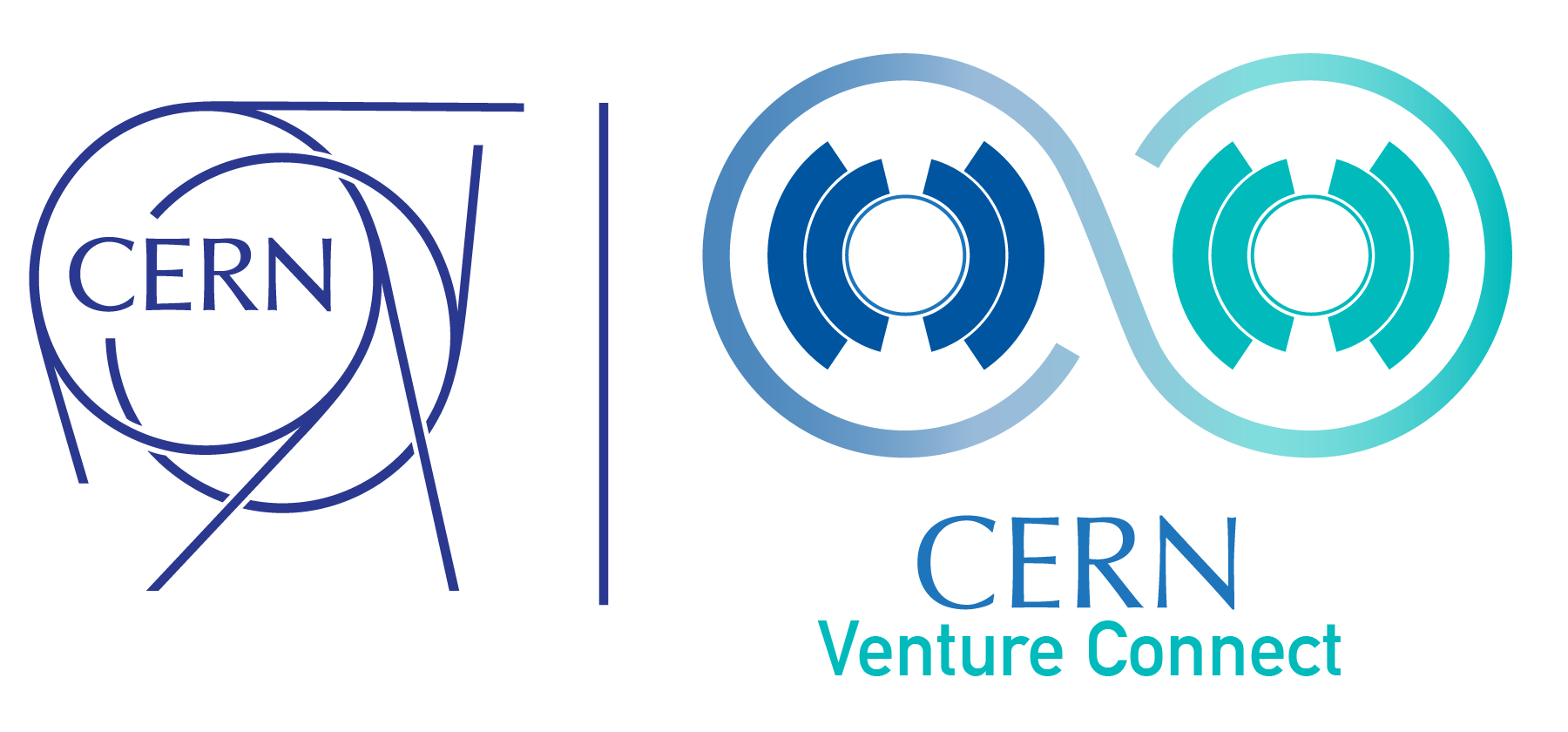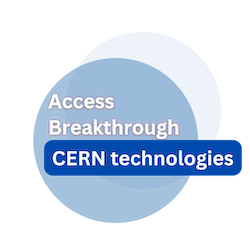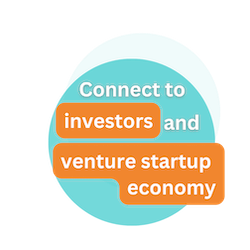.
Ultralight Cold Plate (UCP) can be used for the cooling of power dissipating elements, based on micro-macro vascular pipes embedded in high thermal conductive carbon substrate.
The UCP was developed for sensors/chips thermal management of the new Inner Tracking System (ITS) that has been installed in the ALICE experiment at CERN in 2022.
UCP can have applications in drug production and other areas with need for cryogenics expertise.
Explore the technology specifics:
The CERN technology consists in an Ultralight Cold Plate (UCP) for the cooling of power dissipating elements, based on micro-macro vascular pipes embedded in high thermal conductive carbon substrate.
The UCP is made of a high thermal conductivity carbon plate, embedding ultralight polyimide cooling pipes. Different carbon materials are laid-up in the plate thickness to enhance thermal performance and guarantee structure integrity. The dissipating elements that need to be cooled down are in thermal contact with the UCP through glue or thermal interface materials. The heat is transferred from the dissipating elements into the cooling pipes by the carbon substrate and is removed by the coolant flowing in the pipes. Several coolants have been used, from single phase liquid (water) to two-phase evaporative (C4F10), and different ones are being tested (CO2).
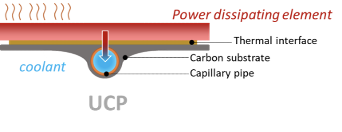
- The technology has been fully developed at CERN, within the ALICE collaboration. UCP serial production (>300 units) was based at CERN in the ALICE Composite laboratory.
- The UCP was developed for sensors/chips thermal management of the new ALICE Inner Tracking System (ITS) that has been installed in ALICE in 2022. The ALICE ITS is a 12.5 Giga-Pixel camera consisting of seven cylindrical detection layers equipped with monolithic pixel sensors that covers a ~10m2 surface and dissipate about 400W/m2. The UCP for the ITS covers a length of 28cm for the three innermost vertex layers and up to 1.5 meter for the 4 outermost tracker layers. The UCP design had to comply not only with large heat removal capacity but also with the ALICE ITS tight requirements in term of extremely low material budget and radiation hardness. The UCP design has been adopted in another detector in ALICE, the Muon Forward Tracker. In addition, three other HEP Experiments have used the same UCP: NA61, MDP NICA and SPhenix.
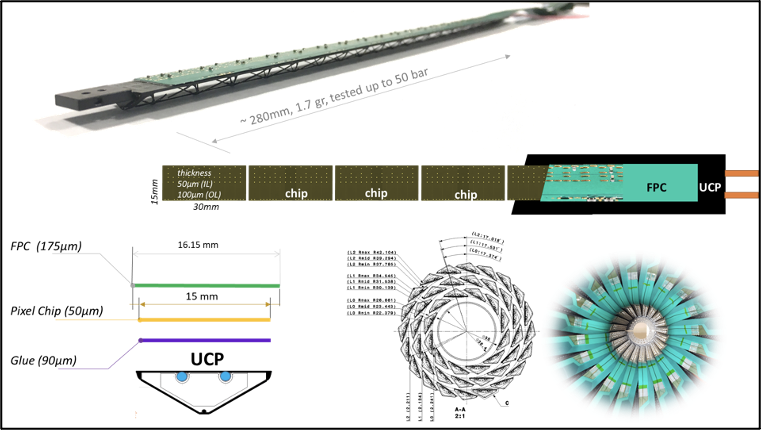
The technology is unique because of its ofering.
- No similar technologies are present in the market.
- The UCP offers unique cooling performance and minimum material thickness and weight. The use of an optimised carbon plies lay-up combined with non-metallic tubes running in between the plies is a completely novel feature. The UCP are produced using a non-conventional manufacturing process for composite material tailored to this specific application. Several tests have been performed to optimise the lay-up of the different carbon plies and the embedding of the polyimide pipes, for the construction of the Cold Plate. Unidirectional High Thermal Conductive (HTC) carbon prepreg (pre-polymerised), pyrolytic graphite foil (PGF) and quasi-isotropic structural carbon lamina (Carbon fleece) are laid up in a double mould that allows at the same time the embedding of the polyimide pipes. After the manual lay-up of the different components, the UCP undergoes a curing process, based on heating and pressure cycles, required for the resin polymerisation and consolidation. Co-curing of carbon laminates and embedded pipes permits to optimise their thermal interfaces by minimising the amount of glue.
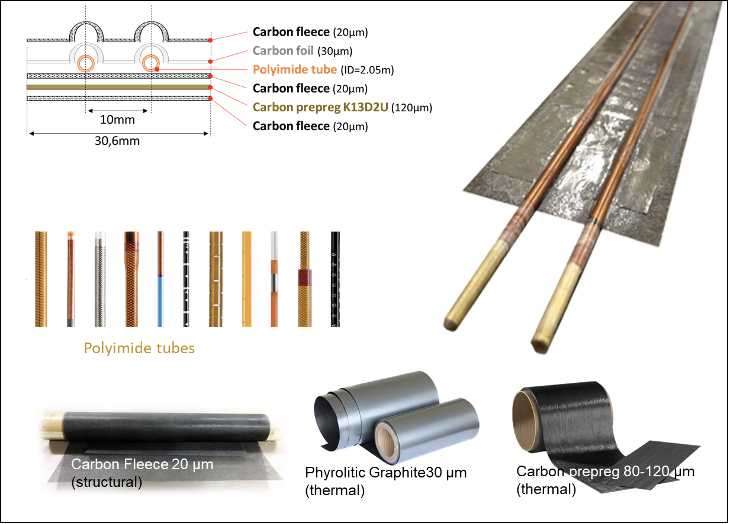
- The resin system for the CFRP is cyanate ester resin, which is preferable to epoxy resin for its low humidity absorption and better dimensional stability in time. The choice of the material for the cooling pipes embedded in the structure is driven by the requirement of low material budget, high thermal conductivity, and radiation hardness. A suitable compromise among these requirements is the use of a plastic tube with a very thin wall. Polyimide shows high radiation hardness up to at least 107 Gy and high radiation length, X0 ≈ 28cm. Small diameter pipes with 1.024mm (2.67mm) inner diameter and 25µm (64µm) thin walls have been used in two of the present applications in HEP detectors. A record ultralight cold plate weighing only 1.7 gram to cover a surface of ~280mmx15mm has been achieved including polyimide pipes of 1mm diameter and a structural stiffener also in carbon fibre for mechanical support.
- In the UCP the pipes are always embedded in the carbon structure and never directly exposed. In this way their intrinsic fragility and tendency to pinch and buckle under localised load does not affect their use. The connection to feeding lines is through a glued joint between polyimide pipes and fittings. The behaviour of the pipes and fittings was qualified under high pressure loads and polyimide erosion due to coolant (water) flow in radiation environment has been assessed. The polyimide pipes are commercially available on the market with a large variety of features and with an extremely tight quality control, being these pipes used in the medical field for vascular catheters. Different pipe sizes down to 50 micron in diameter and 6 micron wall are available on the shelf, as well local braided and coiled reinforcement for bending torsion and pressure increased performances; or specific laser machined features for OD reduction and connectivity. This large range of pipe properties open the possibility of further developments of the UCP technology, towards micro pipes (ID < 1mm) from one side and large surface coverage ( > 1.5m) on the other side, while both these R&D lines are being pursued at CERN.
The technology can have many applications in:
- High-energy physics
- Cryogenics
- Drug production
Reading material and records:
- Technical paper_CGargiulo and Bell_ https://indico.cern.ch/event/810687/contributions/3452034/attachments/1877493/3092189/20190710_CGargiulo_Bell.pdf
- Technical upgrade re CLIC– ALICE_ITS_Upgrade_CGARGIULO- (Relevant info slide 4 onwards)_ https://indico.cern.ch/event/388177/contributions/1820532/attachments/775930/1064037/20150528_CLIC-ALICE_ITS_Upgrade_CGARGIULO.pdf
- https://iopscience.iop.org/article/10.1088/1748-0221/13/08/T08003
- https://cds.cern.ch/record/1625842/files/0954-3899_41_8_087002.pdf
CERN technologies for you
.
Structured Laser Beam is a low-cost laser that produces a non-diffractive beam (NDB). The beam profile remains unchanged even if it propagates over a long distance.
Originally used at CERN for ultra-precision alignment, it has further potential applications in metrology, interferometry, communication, for optical tweezers and in marking of packaging.
Explore the technology specifics:
SLB is a low-cost laser that produces a non-diffractive beam (NDB) that has very low diverge and can maintain the Bessel-like beam and spot sizes for long distances.
What is non diffractive beam?
A non-diffractive beam was first proposed by Durnin et al. in 1978 as a light beam having a transverse intensity distribution that can be modeled using a Bessel function. The beam profile remains unchanged even if it propagates over a long distance.
Current methods of generating Bessel beams are using Axicons, annulus holes, holography methods and using fibres. However, the major shortfall of these current state of art methods are that they are limited to very short distances.
What is a bessel beam? A Bessel beam is a focus high intensity beam a at the centre. There is central spot where all the energy is concentrated. The intensity distribution is not uniform or controllable.
Where as the Gaussian beam profile looks like →
So, why is this called the Structured Laser Beam? The characters of the CERN technology is very similar to the Bessel Beam. However, the uniqueness is that the rings around the central spot can be controlled and tuned. The size of the central beam, the divergence of the full beam and the distribution of the rings - all of them adjustable based on applications.
SLB Principle of operations A special wavefront shape is created by using different optical paths by using very high index optical elements.
The beam profile generated after the generator is a continuous line
The SLB self reconstructs when the path is an obstacle. This has many applications where the laser has to travel where there are either known obstacles or unknown ones. For example, in medical applications (where there might be a known obstacle) or in telecommunications – free space optics where there might be unknown obstacles.
The benfit of using the technology is:
- Low-cost
- Extremely compact spot size and very low divergence
- Non-diffractive over long distances
- Self-constructive after obstacles
- Robust to jitter, vibrations, and variations on the angle of the input beam
The technology can have many applications in:
- Alignment - Original use case at CERN for ultra precision alignment
- Metrology
- Expected cost
- Interferometry
- Communication
- Optical tweezers
- Marking of packaging
A startup from Netherlands is using SLB for engraving/marking applications. They have a working. Prototype and customers who are trialing their product for marking boxes.
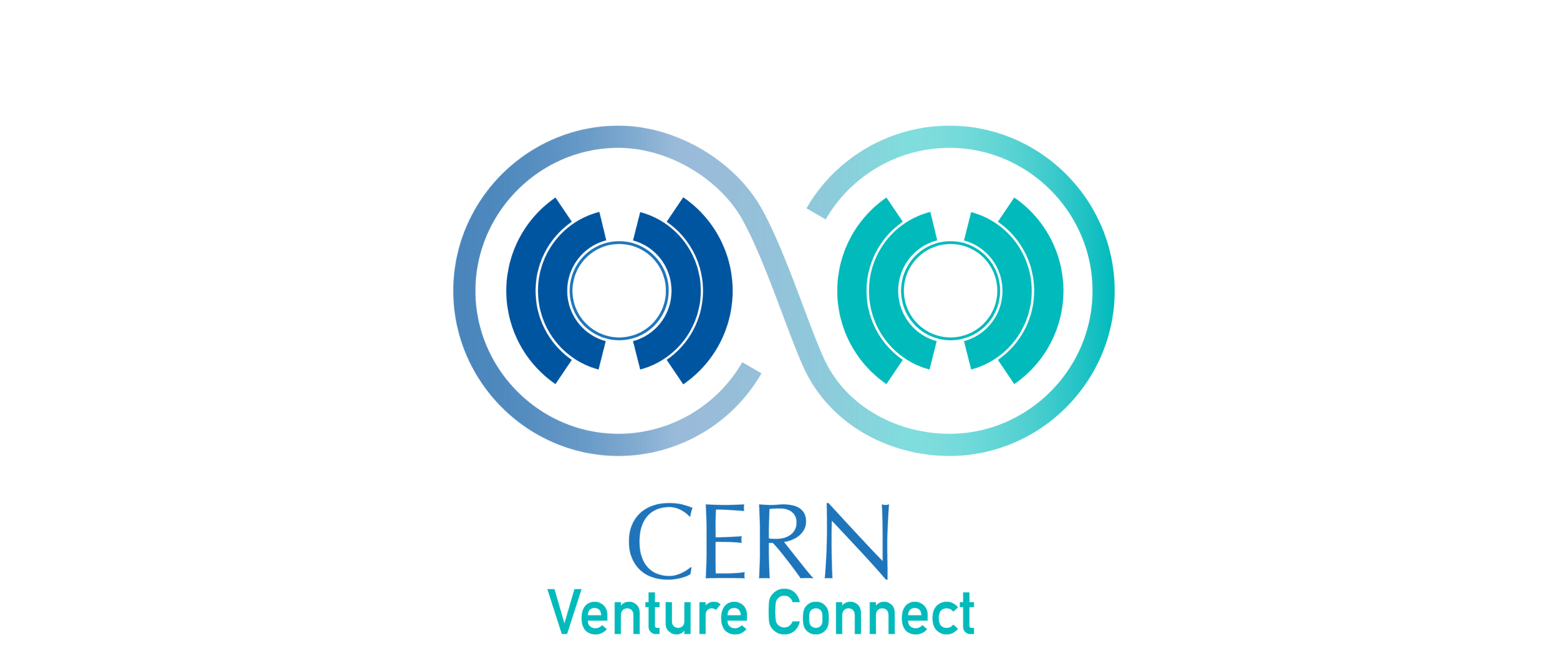
Connecting Startups with Cutting-Edge Technology and Investment
Our mission is to empower visionary startup founders
to address unmet market needs and solve critical
innovation challenges using CERN’s groundbreaking
technologies and expertise.
Why Join the CVC Programme?
Explore CERN Technologies
![]() Discover the vast array of CERN technologies available to help accelerate your venture. Explore how our cutting-edge solutions can be applied to your specific industry and drive your startup’s success.
Discover the vast array of CERN technologies available to help accelerate your venture. Explore how our cutting-edge solutions can be applied to your specific industry and drive your startup’s success.
They can have applications in varying fields – optical communications, metrology, cryogenics, aerospace, drug-production, quantum computing, data storage and more.
Partner with us
Investors, incubators, legal advisors, and more!
Are you passionate about supporting startup founders in their entrepreneurial journey? By joining forces with CVC, your expertise will help our founders ensuring they are well-positioned for growth and innovation.
Contact us
Whether you are a startup, an aspiring founder, an investor, an incubator or just a curious mind, reach out to us for any queries.
Welcome to your new Drupal site!
This is your new Drupal website hosted at CERN. Drupal websites at CERN come with some out-of-the box functionalities.
Quick Tour
Before you get started, let's have a quick tour of your newly created website.
- From the Main Navigation menu settings you can add/remove/update the menu items of the basic menu
- In the CERN Theme settings you can change the colour palette of the website and also choose whether you want the Site Name, Slogan and Logo to appear
- You can change the basic information of your website such as the name, slogan etc, in the Basic site settings page.
The Drupal Infrastructure
The Drupal Infrastucture at CERN provides a collection of useful functionalities for all Drupal websites.
- Hosting the websites
- Keeping track and updating the Drupal core
- Hosting and updating the themes and modules that CERN exclusively provides.
- Providing a set of extremely useful functionalities for your Drupal websites such as keeping backups, cloning your website, connecting your website to webdav, keeping statistics and many more. You can find more in the Site management documentation of Drupal infrastructure
The Drupal infrastructure is managed by the IT department of CERN.
Theme
The default enabled theme is the CERN Theme. If you want to know more about the CERN Theme and what it offers, you can have a look at the official documentation. If you want to know more about the theme structure at CERN, you can read this detailed article.
Modules
CERN also provides a set of useful modules to help you build and style your Drupal website.
- CERN Components: provides a set of patterns that constitute out-of-the box layouts in order to render your content using pre-defined styles.
- CERN Display Formats: provides pre-defined rendering formats for views. The formats are combined with the components and produce views to display your content.
- CERN Landing Page: provides an out-of-the-box content type that gives you the opportunity to build your own pages piece by piece using pre-designed components such as Hero Headers, Image Galleries, Banners etc. Some example landing pages include Accelerators, the Standard Model and the Birth of the Web. If you want to have a predefined content type in order to build beautiful landing pages and you don't want to mess with HTML, CSS and JS, the Landing Page module is your answer.
- CERN Indico Feeds / Events: The package CERN Indico Feeds provides integration with Indico and allows you to import Indico events in your website. The package CERN Indico Events provides a content type called "Indico Event" for creating nodes of Indico Events imported from the CERN Indico Feeds module.
- and more...
The themes and modules are maintained by the Web Team of IR.
Resources
While working with Drupal at CERN, the following resources should be your best friends.
- Drupal Community: Join the e-group of Drupal Community to receive informative emails regarding news of the themes and modules of CERN. You will also receive invitations for the regular Hack Meetings .
- Drupal Community Forum: Do you have a question or a suggestion concerning your Drupal website? You can post it in the forum and the Drupal community of CERN will respond as soon as possible. The Drupal Community Forum is the suggested way to ask questions regarding Drupal, as it helps with knowledge transfer since your questions and the answers will be visible to everyone and encourages knowledge transfer.
- Webtools website: This includes official documentation for the themes, modules, how-to articles, FAQs as well as a guide for Drupal beginners.
In order to remove this block from the front page, navigate to the Block Layout and either Disable or Remove the Welcome Message Block from the Main content region
Pagination
- Previous page ‹ Previous
- Page 1
- Page 2
- Current page 3
- Next page Next ›
